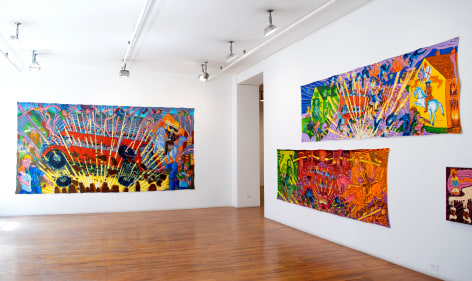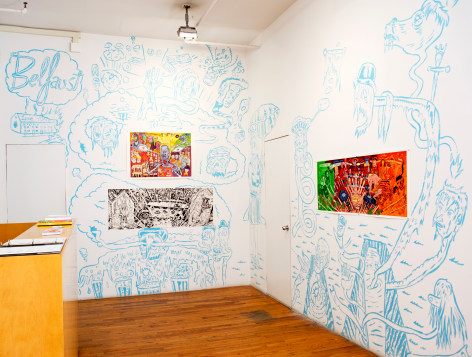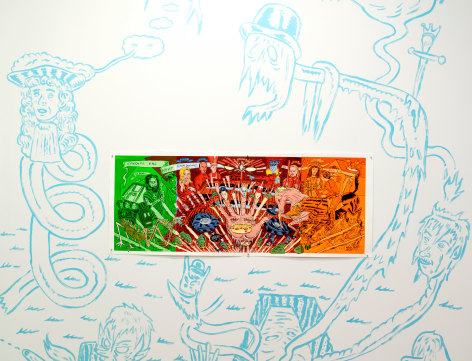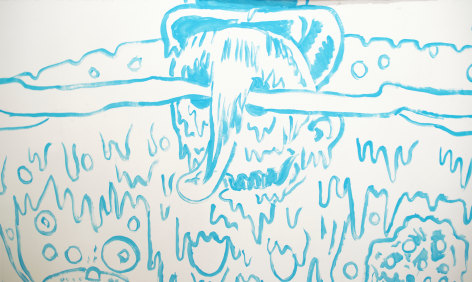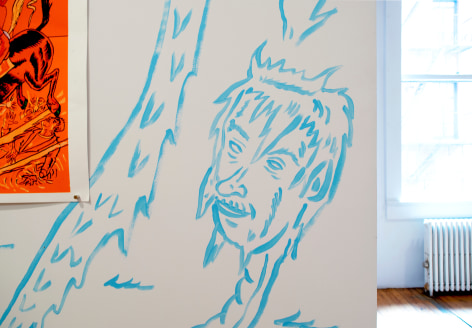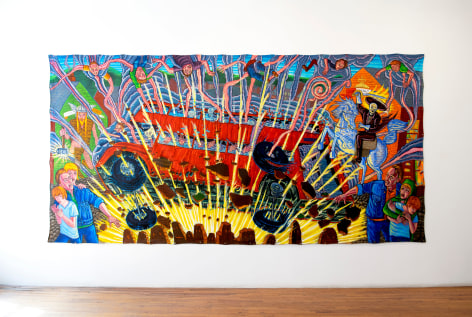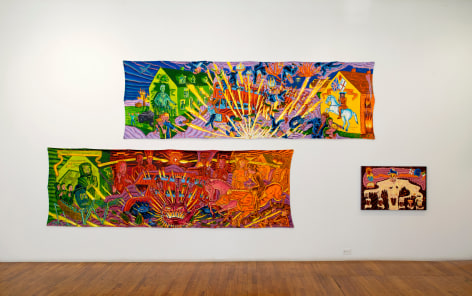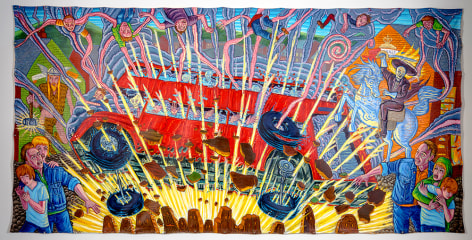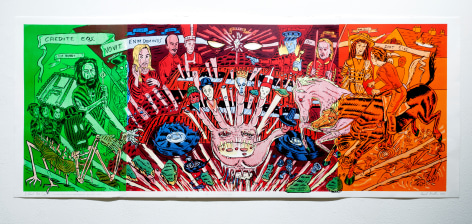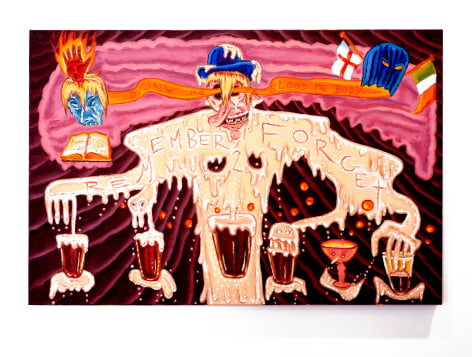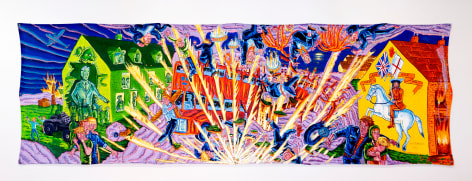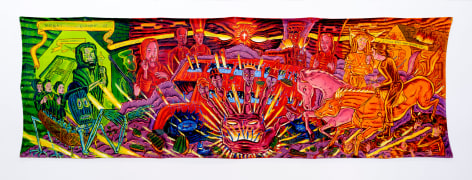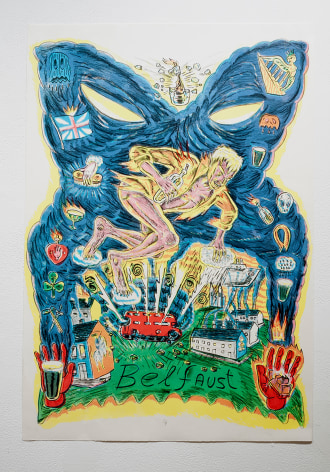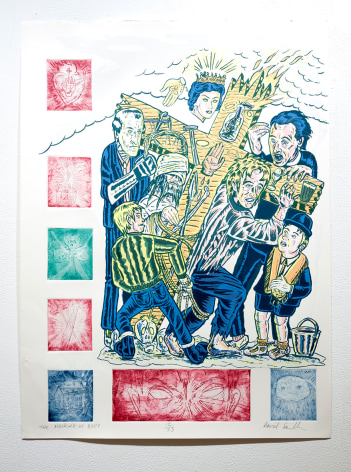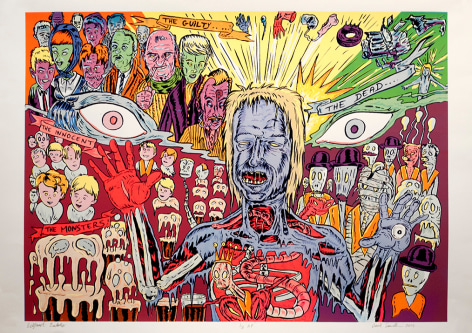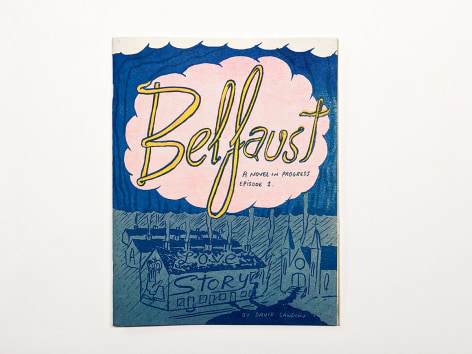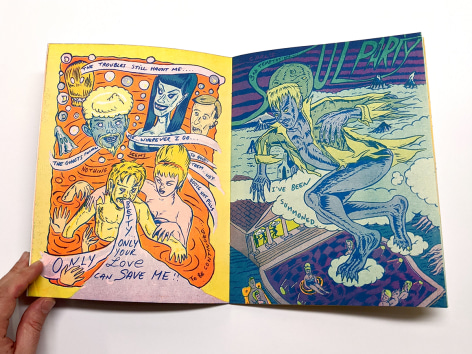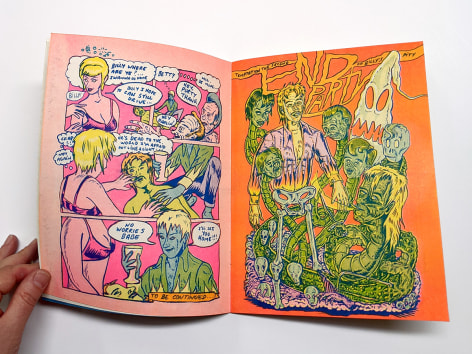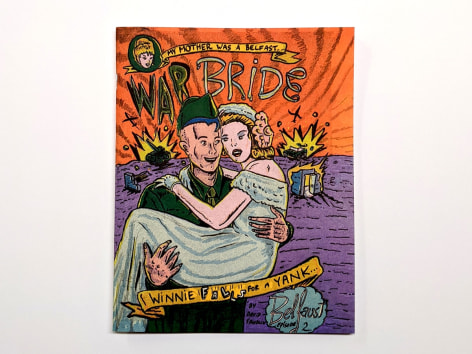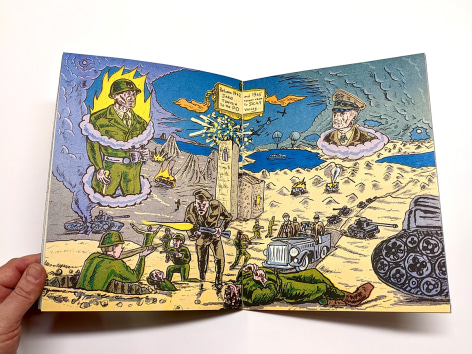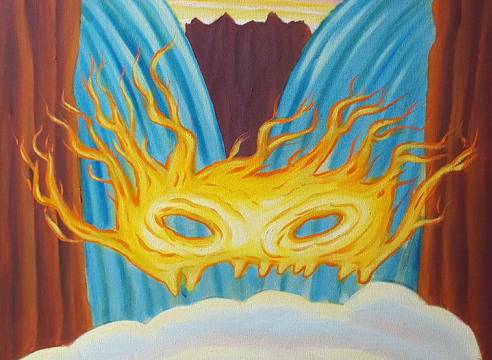
David Sandlin: Belfaust
April 2 - June 5, 2021
From the late 1960s until 1998, Northern Ireland suffered through The Troubles: an era of severe political and sectarian violence, which was particularly brutal in the cities of Derry and Belfast. It emerged from a tormented national history as a call for more civil rights by the area’s Catholic minority. At its heart was, and is, a bitter debate over whether Northern Ireland should remain part of the United Kingdom or rejoin Ireland as a united republic. Born in the late 1950s, artist David Sandlin grew up in Belfast during the 1960s and 70s, as the violence drastically increased. Sandlin’s family was Protestant, but siblings had married into Catholic families. Due to continued threats Sandlin’s family moved to rural Alabama in the United States.
Removed from the civil war in Northern Ireland, Sandlin found himself growing up in a part of a divided America where religious, political, cultural and racial divisions reeked with familiarity. These burning, dual realities have remained central to the artist’s work. A multi-medium artist, Sandlin moves narratives through complementary projects: paintings, drawings, screenprints & unfolding screenprinted books as well as comic books. In these, moral judgements are made as politicians and religious leaders alike are cast as snake-oil salesmen. The devil works behind the scenes, reveling in the chaos he creates. All the while sinners and innocents both try to find a way to persevere.
Belfaust sets the stage in war-torn Belfast, where the main protagonists are Bill & Betty, a young couple trying to survive the chaos. Their lives are put in jeapordy by Carl, Bill’s evil doppleganger who is really the manifestation of Mephistopheles (an agent of Lucifer in the tale of Faust). The largest painting centers on an exploding red double-decker bus, indicative of the prevalence of car and pipe bombs used to wreak havoc and revenge throughout The Troubles. This scene presents Bill’s view of the situation, a general, if simplistic, understanding of the death and flames that reach into all corners. Blocking-in the scene from either side are the famous wall murals of Belfast, one representing the republican nationalists and the other the Ulster (British) loyalists. Two smaller paintings in the series also reflect this same scene, but from different viewpoints: Betty’s (who is appalled) and Carl’s (who is thrilled). The dense paintings are populated with many of the figures and character types that have become synonymous with The Troubles: hunger-striker Bobby Sands, King Billy (William of Orange) as well as men of the Orange Order, hooded fighters of the IRA and UVF, Thomas Cromwell, the Black & Tans and the Horsemen of the Apocalypse.
The Troubles “ended” in the peace treaty of 1998. Here in America, our civil war ceased in 1865. And yet, the root causes of both these violent chapters lack sufficient resolution. History is key to the future, and we are perhaps at a turning point again. Recently, both Brexit and the Trump Administration have tapped into veins of angry nationalism and populism. As they grow they threaten to awaken the havoc and violence of the past. David Sandlin’s paintings are reflections on history by one who has lived, and suffered, through it, not just studied it. They are personal and powerful warnings to us all.

